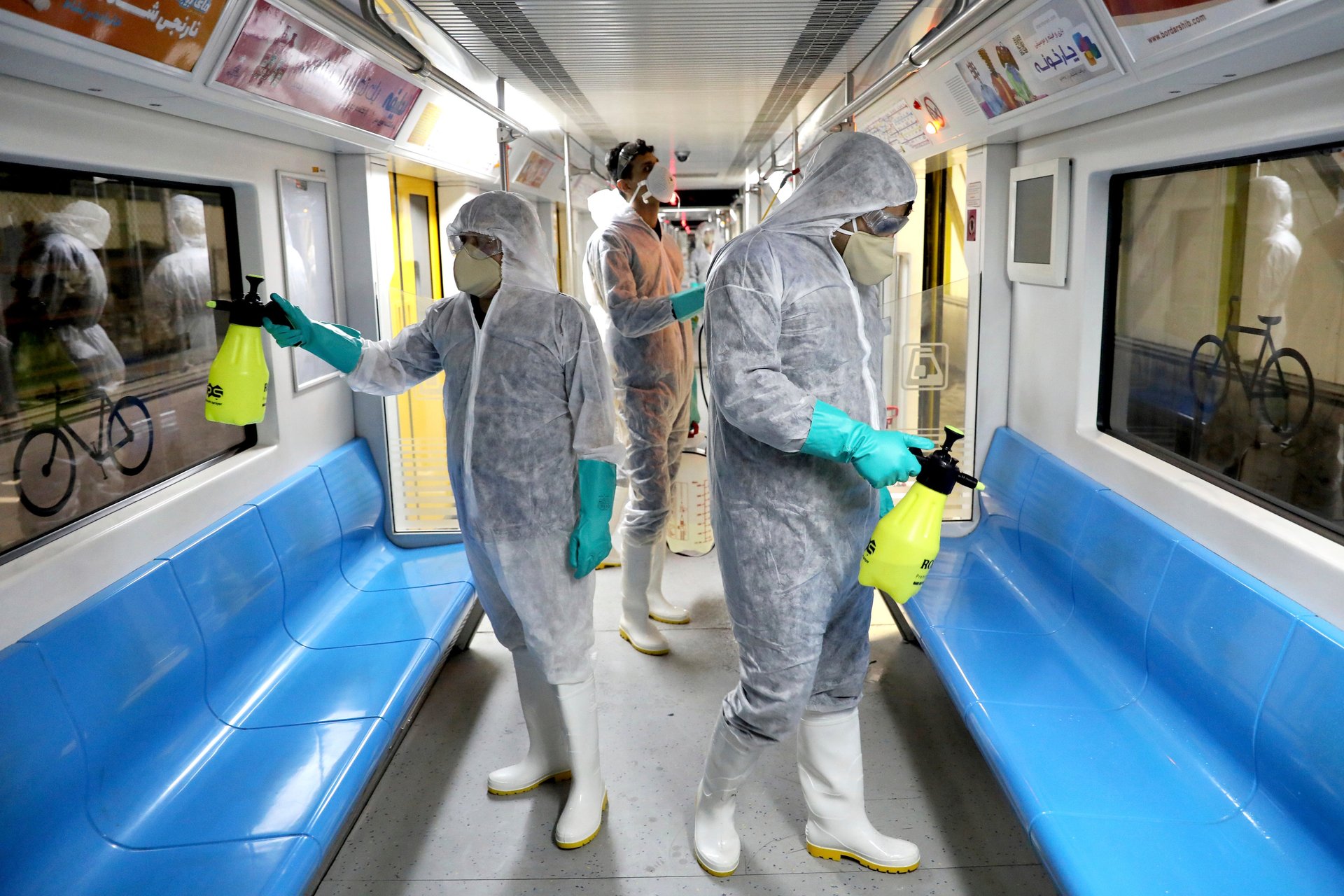It’s dangerous for governments to claim the coronavirus outbreak is under control
Just days before the Chinese government locked down Wuhan, the city at the center of the coronavirus outbreak, health authorities said the spread of the virus was “preventable and controllable.” A week before South Korea reported a surge in confirmed cases traced to a religious cult, the president said the country had brought the virus “well under control.” And this week, US president Donald Trump tweeted that the coronavirus is “very much under control in the USA.”


Just days before the Chinese government locked down Wuhan, the city at the center of the coronavirus outbreak, health authorities said the spread of the virus was “preventable and controllable.” A week before South Korea reported a surge in confirmed cases traced to a religious cult, the president said the country had brought the virus “well under control.” And this week, US president Donald Trump tweeted that the coronavirus is “very much under control in the USA.”
These sorts of pronouncements by public officials may be calculated to reassure the public and shore up people’s confidence in the government. But risk communication experts say such messages are often over-reassuring and over-confident, resulting in a potentially dangerous mismatch between people’s perception of risk and actual reality. The hazards posed by this mismatch are particularly pronounced during an epidemic like the current Covid-19 outbreak, when developments are rapid, time is of the essence, and much hinges on the coordinated responses of government agencies and the public.
“When the officials and the experts are trying to prepare or calm the public, their responsibility… is to recreate in the public the same level of fear or lack of fear as their own,” said Jody Lanard, a risk communication consultant who has advised the World Health Organization (WHO). The public shouldn’t be any more scared or calm than government officials and health authorities—but while this kind of calibration is “conceptually easy… it’s incredibly hard to do if you’re afraid of public fear,” she added.
Dismissing the public’s fears might even run the real risk of fanning fears further. Government officials and the WHO have repeatedly said that now is the time for “facts, not fear.” While facts are crucially important, the admonition also effectively gives the impression that the public’s emotions are just annoyances to be dealt with. But in an epidemic with so much uncertainty, fear is both natural and inevitable.
“The government needs to learn to tolerate that the public will get frightened, without thinking that the public is hysterical or panic stricken,” said Lanard. Every epidemic has a series of what she calls “oh my god moments“—the first death, for example, or the first child to fall critically ill—that cause alarm and anguish. What governments need to do, she said, is to guide the public to “go through that upset a little bit in advance so that they’re a little bit more prepared when the real things happen.”
It is particularly hard to avoid a gulf in authorities’ and the public’s understanding of the public health situation when information is not open and transparent. China is a prime example. But the US, in making classified its Senate briefing yesterday on the government’s coronavirus response, can also come across as withholding information, potentially fueling conspiracy theories. Meanwhile, US officials risk compromising their credibility by contradicting each other, with the White House insisting that the virus is contained, while the Center for Disease Control tells the public to start preparing for community spreading and San Francisco declaring an emergency.
“In short, the whole thing is a master class in how to screw up communications during a crisis and utterly undermine trust in the agencies that will be essential for public health and safety as the epidemic spreads,” wrote Carl Bergstrom, a professor of biology at the University of Washington.
One of the key problems with how governments and the WHO have communicated with the public about the coronavirus outbreak, Lanard said, is the early fixation on containing the disease within China—an unrealistic portrayal of the nature of the epidemic that diverted attention and resources away from mitigation efforts. Over-promising on the prospects of containment efforts, and abandoning the containment strategy when spreading eventually takes hold, “can lead many publics to become more mistrustful of their government and more alarmed,” Lanard and her husband Peter Sandman, also a risk communication expert, wrote in 2009 about the H1N1 swine flu pandemic.
“The governments around the world, and I believe stimulated a great deal by the WHO, gave people the idea that containment could stop the spread,” she said, adding that the emphasis on stopping the spread may even have encouraged countries to impose overly restrictive travel bans and lockdowns of cities. Indeed, it has become clear in recent days that containment has failed, as infection cases have soared in Korea, Italy, and Iran, and the disease spreads through European countries and the Middle East.
As late as Feb. 21, WHO director general Tedros Adhanom Ghebreyesus was still speaking of a “window of opportunity… to contain the outbreak.” The messaging since has shifted, with Tedros now acknowledging that there is “absolutely” the potential for a global pandemic, though there is still a focus on containment in the WHO’s messaging.
One example of a government that has been effective in its messaging to its population is Singapore. The city-state has been widely praised for taking steps such as emphasizing the likelihood of community transmission early on in the outbreak instead of promising to stop the disease at its doors. As early as Feb. 7, its national development minister described community spreading as an “eventuality.” Stringent close contact tracing and quarantine polices were enacted—a man had his permanent residency revoked as punishment for breaching his home quarantine order. The number of daily recoveries there now outnumbers new confirmed infections.